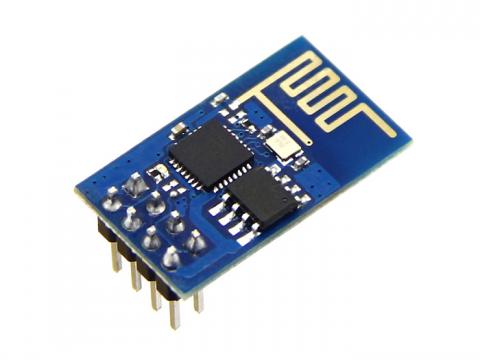The ESP8266 ( get them [here] ) is a very low-cost WiFi to serial board for makers that lets you create "Internet of Things" (aka "IoT") devices with low-end hardware, such as Arduinos, mbed, and raw microcontrollers.

You can use a UART device on your Arduino, etc to talk to this board and communicate over to other devices, computers or websites. The hardware on the ESP8266 takes care of all the overhead needed to implement Wifi. You use an "AT" style communication over the serial UART to interact with it, reminiscent of the way dial-up modems over phone lines used to work.
Information in English about these devices has been scant, but more and more has been popping up across the 'nets. There are alternative firmwares and SDKs for changing the way the board works, and alternatively using the on-board microcontroller directly, instead of using it in conjunction with another platform.
With the stock firmware, it appears these devices run 115200 baud serial connection, which can sometimes be tricky to achieve with an Arduino or AVR microcontroller, especially at slower system clock speeds needed when running at 3.3Volts. some versions of the firmware run at 57600 baud. The latest (0.9.3) is reported to run at 9600 baud, while much slower, should be doable by most microcontrollers, even in a pure software implementation.
It can run as a Wifi client or as an AP. It support secured Wifi protocols such as WEP, WPA-2, etc. The latest firmware reportedly added support for UDP packets.
Here are some useful links that will help you along:
Electrodragon has a nice wiki page that outlines the features as well as some of the "AT" commands that are used to interact with the chip. They also have a first time use guide.
Ray of Ray's Hobby has a review of the board and an example getting started Arduino Sketch
And, finally, another cool project. Redditor Doomhammer458 got an Arduino to accept commands from a browser to change NeoPixel colors, with the source on Github.
![]()
